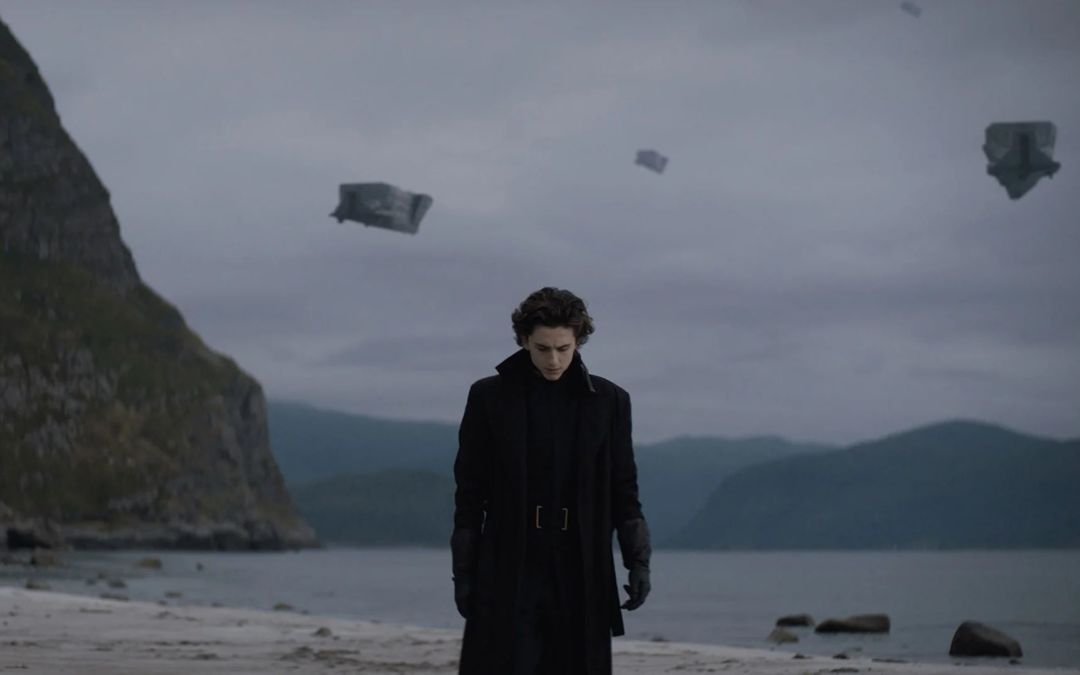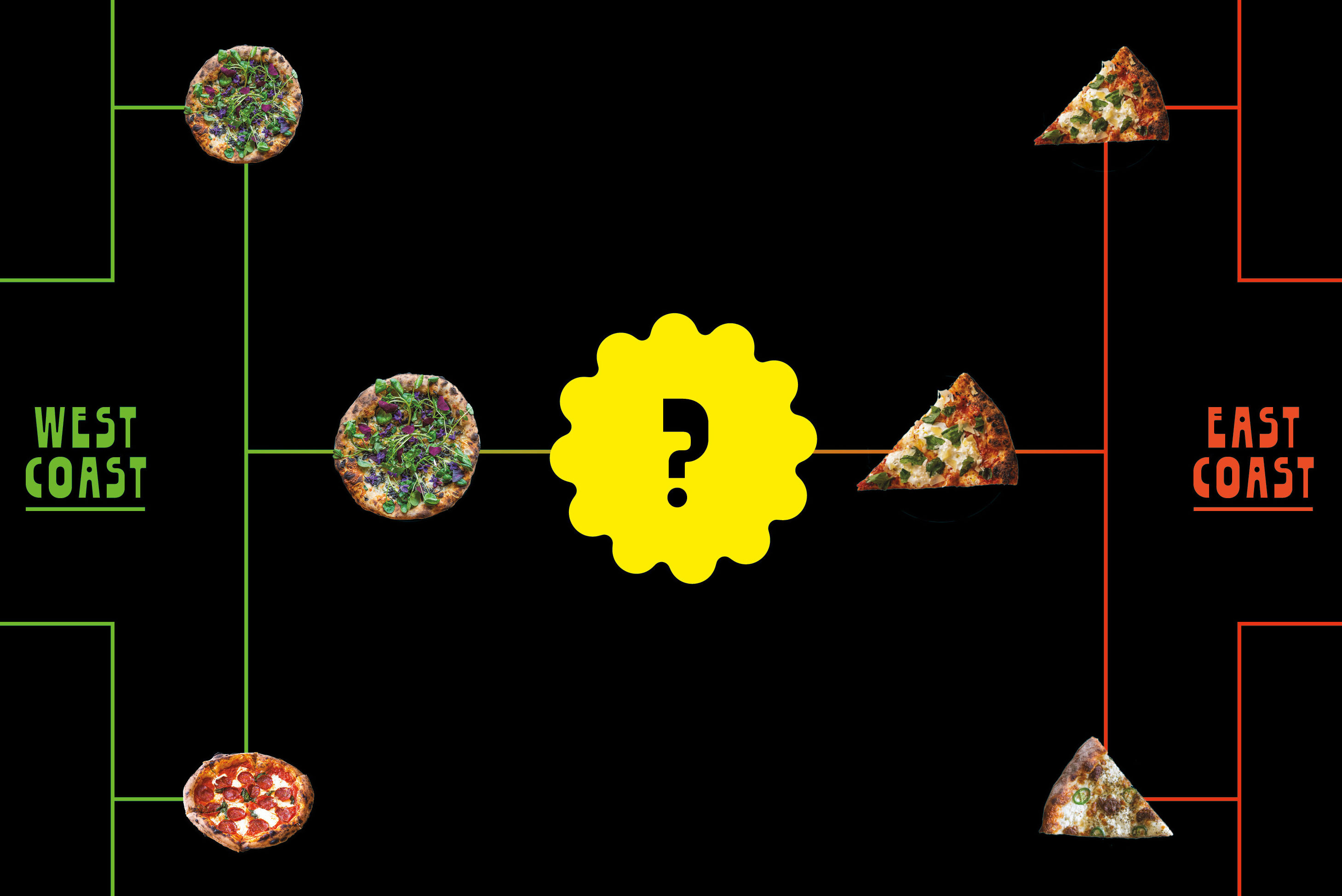Dune, a Sci-Fi Classic Inspired by the Oregon Coast, Returns to the Cinema

Timothée Chalamet as Paul Atreides in Dune
Image: Warner Bros
The Oregon Coast digs up different responses in each of us. I go and remember the time I choked on a fistful of sand while barreling down a dune at Pacific City when I was 10. Frank Herbert goes and is inspired to write one of the most beloved sci-fi novels of all time. Potato, potato*. (*More on this later.)
In 1957, Herbert (born in Tacoma, then working as a journalist in Seattle) chartered a plane to Florence, Oregon after hearing of a federal plan to tame the region’s dunes by planting beach grass. The visuals he encountered—of a sandy, feral landscape and human attempts to wrestle it—set his imagination alight, and he dreamt up the desert planet Arrakis. The rest is history: in 1965, Herbert published Dune, a dense sci-fi tome that swirls together ecology, politics, religion, hallucinogens, space travel, and colonialism. It was a hit, and the Florence-inspired planet at its center sits beside Hoth and Krypton in the pantheon of iconic fictional worlds.
Attempts to film Dune have been notoriously difficult. In the ’70s, Chilean visionary Alejandro Jodorowsky gave a 14-hour version a whack; all that’s left is a 2014 documentary about his failure. After long fights with the studio, David Lynch unleashed a maligned film version in 1984 that he considers “one of the great sadnesses of his life.” A not-especially-loved 2000 miniseries for the Sci-Fi Channel came and went without much fuss.
On October 22, Canadian filmmaker Denis Villeneuve (who earned his sci-fi bona fides with 2016’s Arrival and 2017’s Blade Runner 2049) entered the ring. Known for his deliberate, painterly style, Villeneuve’s take on Dune was destined for one of two fates: ponderous and remote or exacting and absorbing. I’m thrilled to announce it belongs to the latter camp.
Too often, the word "epic" gets attached to plastic, frictionless corporate wet dreams filled with digital lens flares and blue beams of light, but Villeneuve's Dune goes for epic in the Cabiria sense, and by and large, it succeeds. It’s a rare thing for a blockbuster in 2021 to inspire real, actual awe. Dune inspires it about once every five minutes.
The photography by Greig Fraser (who also shot 2010’s Let Me In and the Star Wars standalone Rogue One) is consistently jaw-dropping, both for its “every frame a painting” beauty and its success in silently advancing the story, removing crucial expository burden from the screenplay. Hans Zimmer’s screeching, metal-adjacent score is the very definition of spine-tingling, generating tension, mystery, and scope out of thin air. The key ingredient to Dune's success, though, is Villeneuve's signature patience.
There are wars to be waged and destinies to fulfill here, but we're never merely being shunted between set pieces—every moment matters, and every moment breathes. Pay attention to the texture of this robe or the contours of that fresco, Villeneuve seems to say; let the twin strangeness and familiarity of each tableau sink in. His world building succeeds where his predecessors failed because this Dune has no interest in cramming its intricacies down your throat all at once: you’re a visitor to a distant, fully-realized future, one that has no need to announce itself. That fly-on-the-wall slow drip ropes us in far faster than a clunky voiceover ever could.
Dune is not an easy beast to summarize, especially without sounding ridiculous, but here goes: in the year 10,191, the galaxy is under imperial rule. Arrakis, a forbidding dessert planet, is home to a substance colloquially called spice that serves as a life-extending hallucinogen for its indigenous people (the Fremen) and a key space travel compound for everyone else.
Things kick off when control of the planet shifts to the noble House Atreides, and Duke Leto (Oscar Isaac) becomes its ruler. Leto’s teenage son Paul (Timothée Chalamet) has been seized by dreams of his own demise; Paul’s mother Lady Jessica (Rebecca Ferguson), a sort-of space witch, hints that he may be a long-rumored galactic messiah. When they get to Arrakis, the Atreideses and their friend, Josh Brolin, must evade the evil slug-like Stellan Skarsgard, who can fly and wants his planet back. That planet is filled with giant, horrifying sandworms, which you must dance to avoid. Paul and Jessica are protected by a very strong man named Duncan Idaho* (*there’s your potato payoff; he is played by Jason Momoa).
Despite constantly flirting with the edge of nonsense, Dune rarely breaks a smile. It asks you to go with it, and you do, because you trust the precision of Villenueve's vision and become intoxicated by the exquisite strangeness of Herbert's imagination. Images of imprisoned, blue-eyed Fremen clamoring for water haunt the memory; flashes of violence and blurry premonition keep wresting the air from your lungs. The similarly straight-faced films of Christopher Nolan can be exhaustingly dour, an exercise in grimness. Dune takes itself seriously, but it never crowds out the possibility for hope, and it glides along on the delight of discovery.
This is not really an actor's film—it belongs to textures, details, political acuity, and worm attacks—but a few do make an impression. As Lady Jessica, Ferguson is outstanding, a woman saddled with twin mandates of love and prophecy who quietly suffers at the hands of each. In her brief turn as a Truthsayer (a Grand High Space Witch, if you will), a terrifying Charlotte Rampling (in an unbelievably tall hat) walks away with the film's best scene. Momoa, as Potat—er, Duncan Idaho—is improbably charming.
Chalamet, on the other hand, is serviceable. As Paul, he should come across as a young nobleman grappling with his unexpected fate, and he does, more or less. The demands of world building and plot-greasing keep us from getting especially close to him, though, and this brings us to the most controversial bit of Villeneuve's Dune: it's only half of the story. The title card reads "DUNE: Part One," and Villeneuve has said he never would have signed onto the film if he was asked to adapt all of Herbert's book in a single go.
So after 2 hours and 40 minutes of engrossing, epic cinema, instead of ending, Dune essentially stops. There's something satisfying about its lack of adherence to a three-act structure, but we end at the precise moment our protagonist's arc is heating up. After a successful opening weekend, Warner Bros and Legendary have announced that Dune: Part Two is coming, but can I in good conscience recommend this incomplete installment as a standalone picture?
In a word, yes. The marketing of this Dune conspicuously lacks any "Part One" qualifiers, and it's hard not to smell a bit of a bait-and-switch. (Zendaya, heavily teased in the film's long lead-up, barely appears; she'll be much more integral to part two.) But the awe Villeneuve conjures is real, and it lasts. Days later, I find myself revisiting countless key images, and while I could fire the film up on HBO Max whenever I want (it's streaming on the platform until November 20), I'm compelled to buy another ticket, sit through another 160 minute half-movie, and let the consummate craft wash over me all over again.
Simply put, Dune works. It's proof that bigger absolutely can be better, as long as "bigger" doesn't mean "faster." I'm hard-pressed to remember the last time something on this scale worked so well for me, and not for nothing, it's inspired me to pay Florence a visit sometime soon. Maybe I'll finally crack my masterpiece.




